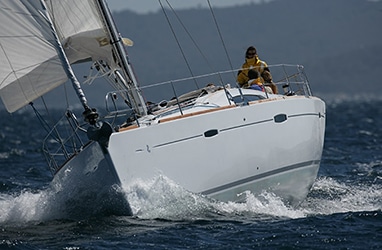Safe Speed Nav Rule
The Rule
Every vessel shall at all times proceed at a safe speed so that she can take proper and effective action to avoid collision and be stopped within a distance appropriate to the prevailing circumstances and conditions.
In determining a safe speed the following factors shall be among those taken into account:
- By all vessels:
- The state of visibility;
- The traffic density including concentrations of fishing vessels or any other vessels;
- The manageability of the vessel with special reference to stopping distance and turning ability in the prevailing conditions;
- At night, the presence of background light such as from shore lights or from back scatter from her own lights;
- The state of wind, sea and current, and the proximity of navigational hazards;
- The draft in relation to the available depth of water.
- Additionally, by vessels with operational radar:
- The characteristics, efficiency and limitations of the radar equipment;
- Any constraints imposed by the radar range scale in use;
- The effect on radar detection of the sea state, weather and other sources of interference;
- The possibility that small vessels, ice and other floating objects may not be detected by radar at an adequate range;
- The number, location and movement of vessels detected by radar;
- The more exact assessment of the visibility that may be possible when radar is used to determine the range of vessels or other objects in the vicinity.
Discussion
This rule is another good example of leaving the responsibility to good seamanship. You can see that it was also written without any legal gegle. Just plain and simple. And even without being a good seaman (person), anyone can see that these are common sense rules.





